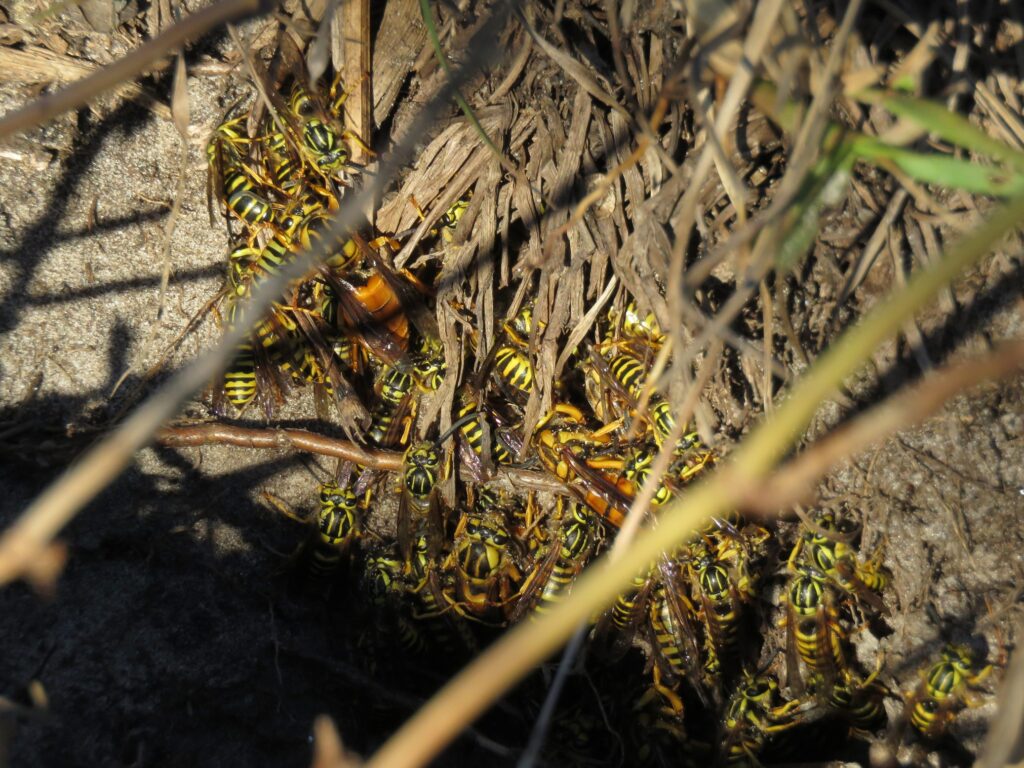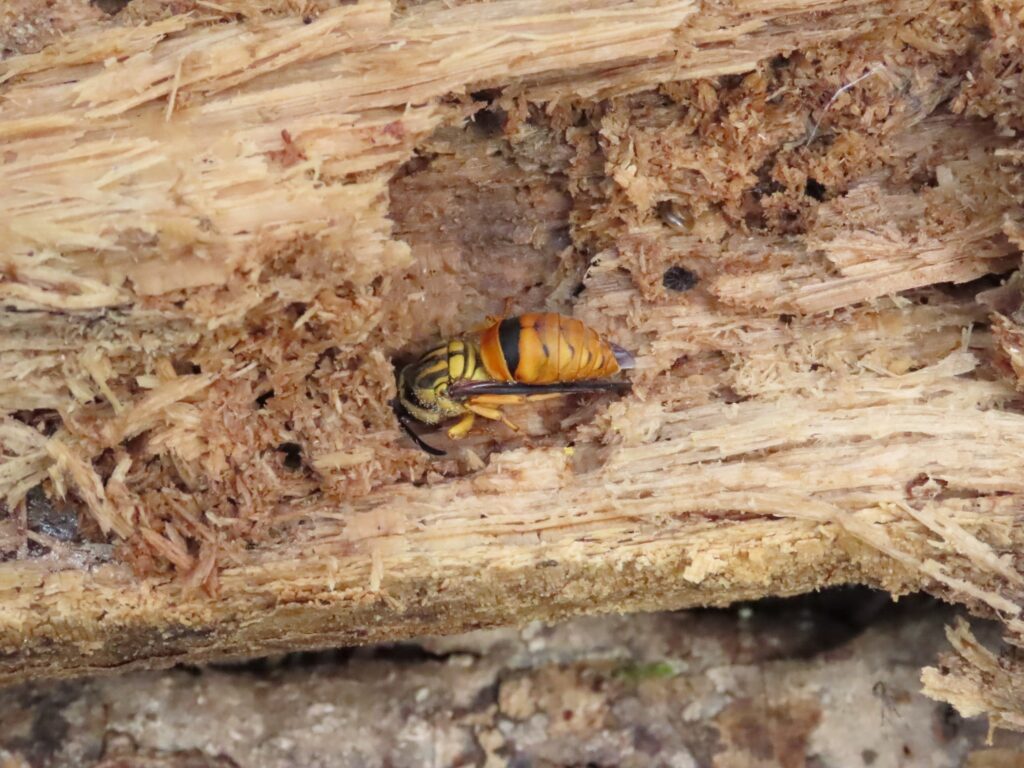


This week for Flora and Fauna Friday it’s a bunch of black and yellow insects with bad attitudes, Yellowjackets (Vespula spp.) or colloquially referred to as “Ground-Bees”.
Yellowjackets are members of the family Vespidae which includes its equally notorious cousins: the Hornets and Paper Wasps. Here in South Carolina we have two species of Yellowjacket, Eastern (V. maculifrons) and Southern (V. squamosa), with the Southern Yellowjacket being most common in the Lowcountry. Both are very similar in appearance with a black body ringed by numerous vibrant-yellow bars. Yet the two species are easy to tell apart up close, as the Southern has two lengthwise stripes on the back of its thorax and the Eastern has a solid black center to its thorax. Yellowjackets, like bees, have castes comprised of queens, workers, and males. Workers are the typical Yellowjackets you encounter and are smaller, infertile females. Males look very similar to the workers but have a slightly elongated abdomen and antennae. Queens are larger, fertile females with proportionately more yellow on their abdomens. Southern Yellowjacket queens are distinct in that their females tend to have a golden-orange abdomen with very little black. Whereas eastern queens have a more sunflower yellow abdomen with two lines of black spots. Yellowjackets live in large colonies and build paper nests underground or in rotten stumps and can reach the size of a watermelon. If you’ve ever seen a Yellowjacket, or other wasp, chewing on a log or wooden handrail it’s because they’re harvesting wood pulp for building their paper nests. Yellow Jackets primarily live in forest habitats but will occasionally nest in more open areas. Colonies generally only last a year with most of the individuals dying off over winter. However, freshly hatched queens will venture off from their home colony to hibernate in rotting logs and leaf litter over winter, so they can start their own nest come spring.
Yellowjackets have an interesting diet. As adults, they eat nectar, fruits, and anything sugary they can get. That makes them a frequent visitor of both hummingbird feeder and jelly feeders, and they will happily climb into your soda can when you’re not watching. However, when they start life as wee larvae stuck in paper cradles, Yellowjackets are almost entirely carnivorous and insectivorous. Adult workers will scour the forest in search of arthropods to hunt and carcasses to scavenge. When they bag a juicy bug or stumble upon roadkill, a filleted fish skeleton, or your ham sandwich they will chew it up and carry it back to the nest to feed those growing baby wasps. Whether they’re feeding their larvae or themselves, Yellowjackets make sure to let the rest of the nest know where they found that food and, before long, whatever it is will be swarming with Yellowjackets. They’re fairly territorial about their food but take the security of their nests to the extreme. Their black and yellow coloring is a warning that these trigger-happy insects are armed with a venomous sting and, unlike bumblebees and most wasps, those colors aren’t a half empty threat. If you’re unlucky enough to stumble over a Yellowjacket nest, you’ll be in for a world of hurt as they’ll swarm anything that wanders to close, sting it repeatedly, and chase it until it’s long gone.
Yellowjackets get a bad rap and, if I can be frank, it’s deserved. They’re the most aggressive animal I’ve encountered in my years ambling about the Lowcountry. Forget Cottonmouths, Coyotes, and Alligators, Yellowjackets are the only thing I’ve seen that’ll make a beeline from twenty foot away to ruin your day for seemingly no reason. I can’t count the number of times myself or a companion have been stung out of nowhere by a Yellowjacket with a chip on its shoulder. Yet, even with their sour dispositions and painful sting, they still have their predators. In the upstate, bears and skunks dig up their fair share of Yellowjacket nests but here on the coast, their number one predator is the Armadillo. An Armadillo’s armored hide and stout claws make the underground larvae of both Yellowjackets and ants an easy target for them!